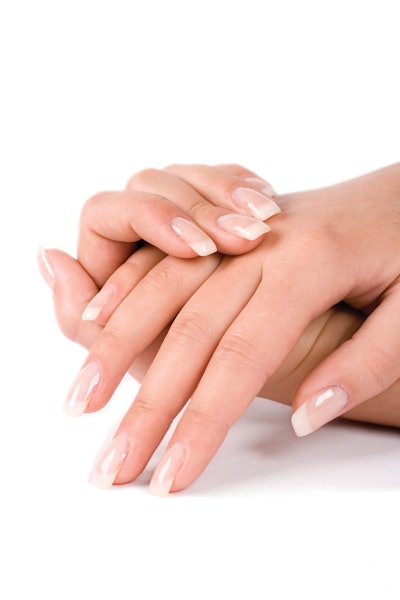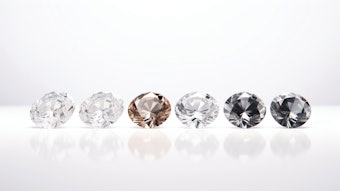In a perfect world, a new client would come to the salon with bare nails and her service would start from scratch. Unfortunately, that’s not always the case. Worse yet, some clients truly have no idea what they have on their nails, making it difficult for techs to know exactly how to proceed. “Some nail products won’t soak off and not all nails can take the process of removing before reapplying,” says ibd educator Vicki Ornellas. Also, not all products work well together, and applying a new product over an unknown one can have unintended results. While the trained eye can usually tell the difference between gel polish and enhancements by the thickness, identifying traditional clear acrylic or gel can be difficult by sight alone, says Allie Baker, global brand ambassador for EzFlow. Here, top educators take on the case to help you solve your next mani mystery.
 mystery manicure
mystery manicure
1. Start with a few questions. Begin by asking the client if her nails were cured in a light—but don’t stop there. The client may not realize that multiple products were used in a single service, such as acrylic nails with gel top coat. Baker always follows up with a few extra questions to confirm each answer. “If they say that the tech used a light, I usually follow up with, ‘Was there powder involved?’ or ‘Did every layer go into the light?’” Keep in mind, not all clients are well versed in nail terminology, so try to pose questions plainly, such as, “Was there a liquid and powder or did it look like thick hair gel?”
Additional questions that probe the client on the salon or product quality can also be helpful, such as ‘Where did you get your nails done?’ or ‘How much was the service?’ or ‘Do you know what brand was used or did you see the color of the container?’ As you ask questions, back them up with the reason why you’re asking, says Baker. By doing so, you’re educating the client about the key differences between nail products and why it’s important to keep types (and even systems) together to get the best outcome. “The client will have more confidence that you know what you’re talking about,” adds Baker. This, in turn, will help the client understand why you can’t guarantee the service when the base is not your work or product.
2. Look and listen for clues. As you interview the client, start removing the bulk of the product with a file or e-file. The dust will give you an indication if they’re wearing gel or acrylic, says Yvette Holt, educator for LeChat, who notes that gel dust is typically finer. Baker finds gel files quickly; conversely, acrylic takes a little more work. And Ornellas uses sound as a clue. “Gel is much softer. The sound is different.” Also, hard gel won’t lose its shine with acetone, while gel polish, acrylic and acrylic dip will dull or start dissolving in acetone.
3. Crack the case. After making your best educated guess at the product used, you have two options for the service: Apply new product on top of the existing product or remove the existing product completely and start over. Starting over is the safest bet, but it requires more time, which may not have been scheduled. If this is the case (and the existing product looks to be in decent shape), Ornellas thins the product as much as possible before adding the new.
Depending on the severity, you may have to ask the client to consider removing the product completely—even if there’s no time for a new set during the current appointment. (You don’t want poor results reflecting on you once the client leaves the salon.) If a client insists on a fill, no matter your advice, make sure all lifted product is fully removed and encourage them to book an appointment for a brand-new set as soon as possible. Ornellas advises having the client return a little sooner than two weeks to make sure everything is holding up.
At the end of the service, be clear that until the next appointment, any fixes will be an additional charge. But be sure to also communicate your confidence that you can (and will!) get her nails back on track and are eager to help during the transition.
Do you have any advice for handling the mystery manicure? Let us know in the comments below!
-Leslie Henry is a business development executive, licensed nail technician and the blogger behind workplaypolish.com.
[Images: Getty Images/GE5_Net/Istock]
This article was first published in the October 2017 issue of NAILPRO











